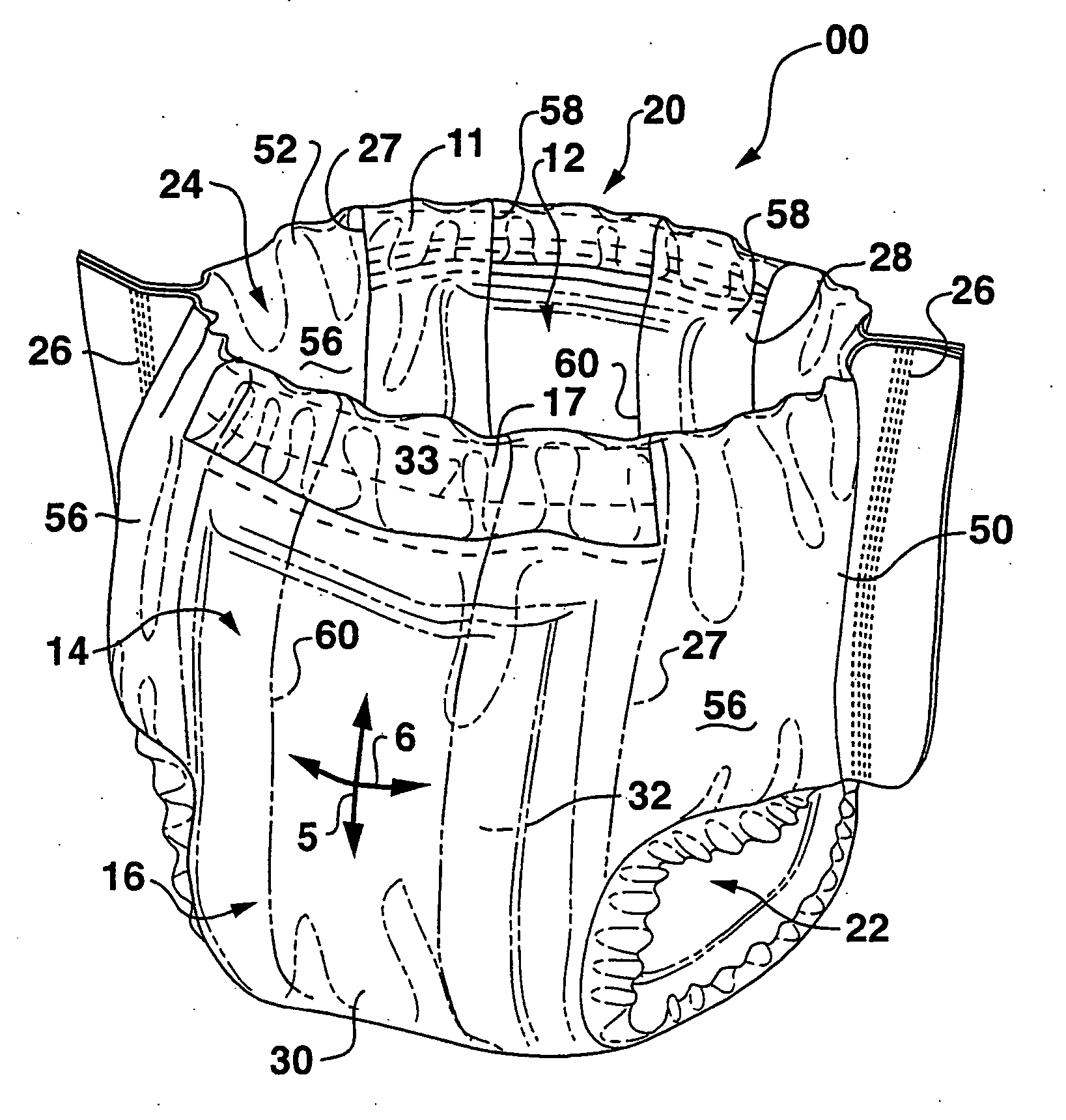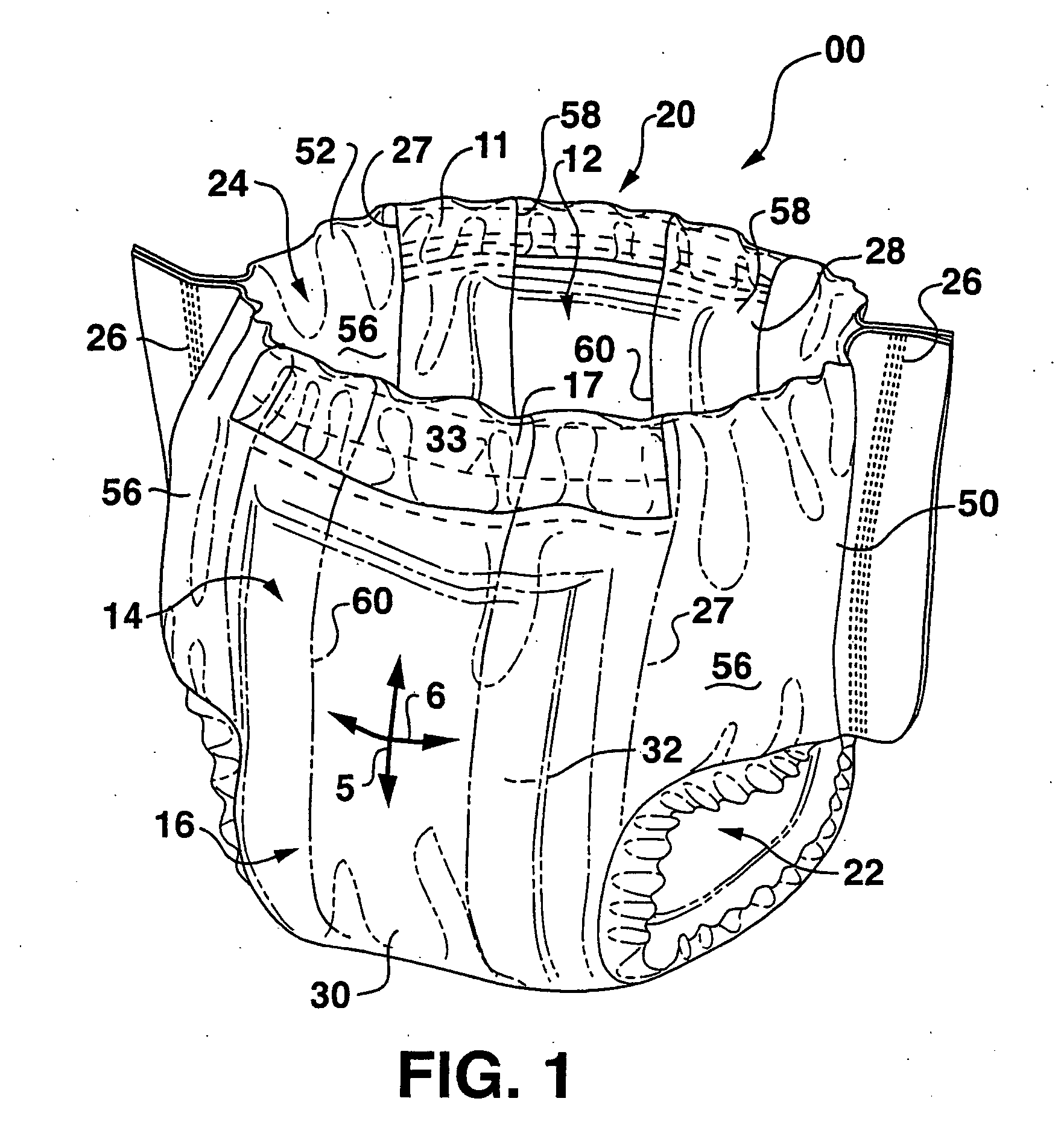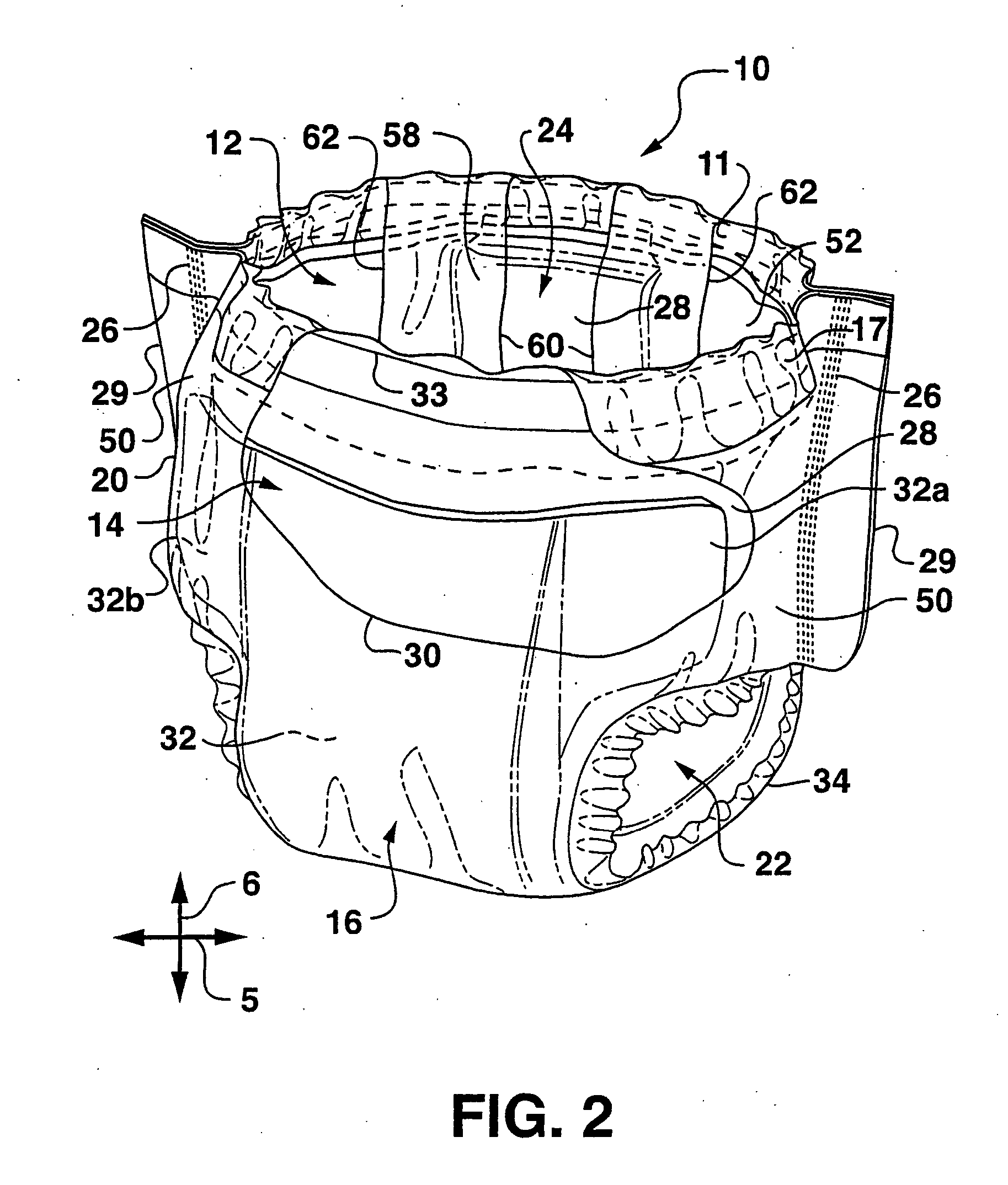Absorbent article with low coefficient of friction between materials of differential tensions
- Summary
- Abstract
- Description
- Claims
- Application Information
AI Technical Summary
Benefits of technology
Problems solved by technology
Method used
Image
Examples
examples
[0062] For purposes of the present invention, various combinations of materials were tested to determine the kinetic coefficient of friction between such materials. It is believed that the interface kinetic coefficients of friction are reproducible and measurable, and are more representative of actual product use conditions. The kinetic coefficients of friction can be determined using ASTM method D 1894-00. The ASTM procedure is incorporated herein by reference. The ASTM procedure calls for a sample size of 250 mm in the MD and 130 mm in the CD. “Clean” samples of this size typically cannot be “cut” or otherwise obtained from conventional absorbent articles and, thus, to measure coefficients of friction in strict accordance with the ASTM procedure, adequate samples would need to be obtained from the manufacturer or vendor of the materials. To measure the coefficient of friction between samples from an actual absorbent article, it may be necessary to modify the ASTM procedure to acco...
PUM
 Login to View More
Login to View More Abstract
Description
Claims
Application Information
 Login to View More
Login to View More - R&D Engineer
- R&D Manager
- IP Professional
- Industry Leading Data Capabilities
- Powerful AI technology
- Patent DNA Extraction
Browse by: Latest US Patents, China's latest patents, Technical Efficacy Thesaurus, Application Domain, Technology Topic, Popular Technical Reports.
© 2024 PatSnap. All rights reserved.Legal|Privacy policy|Modern Slavery Act Transparency Statement|Sitemap|About US| Contact US: help@patsnap.com










